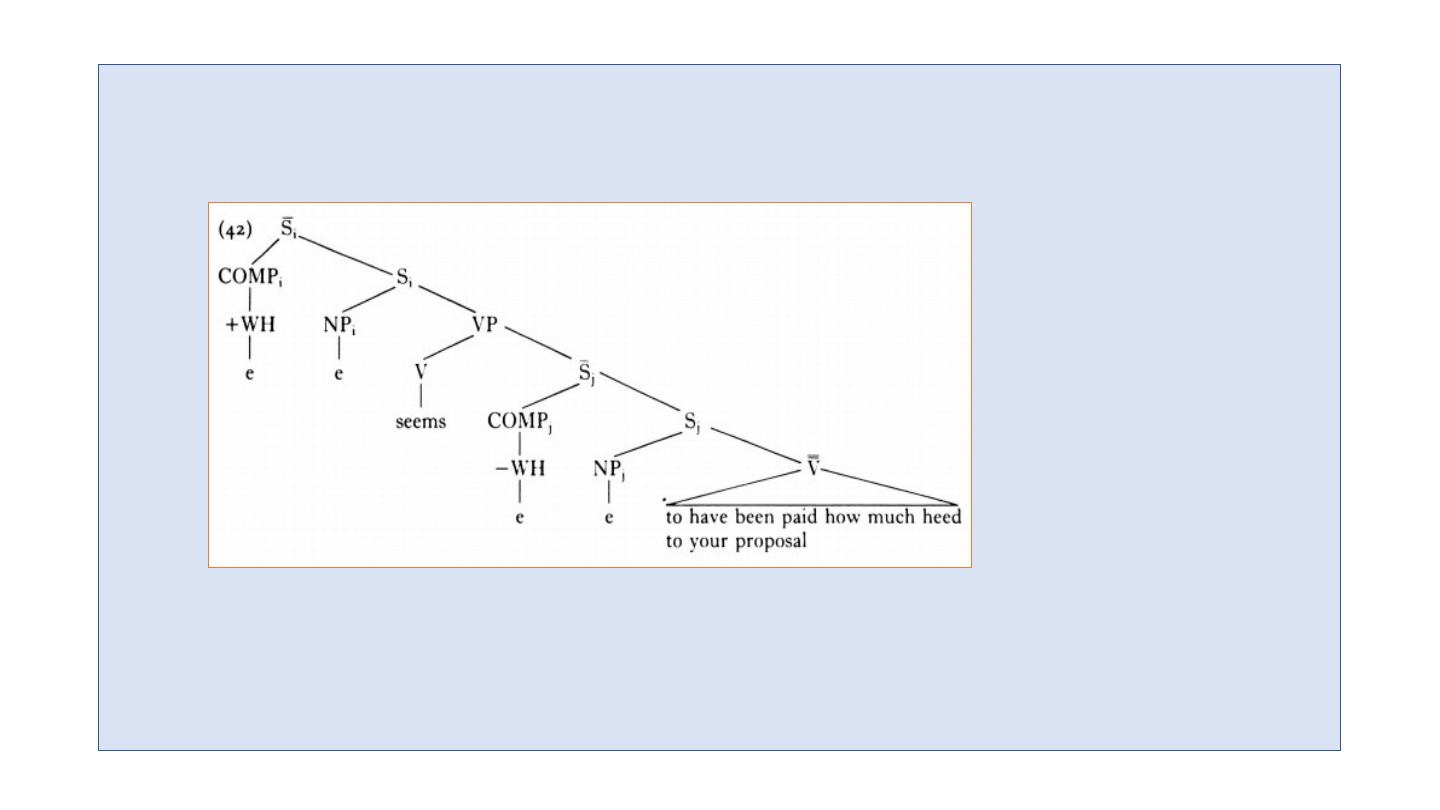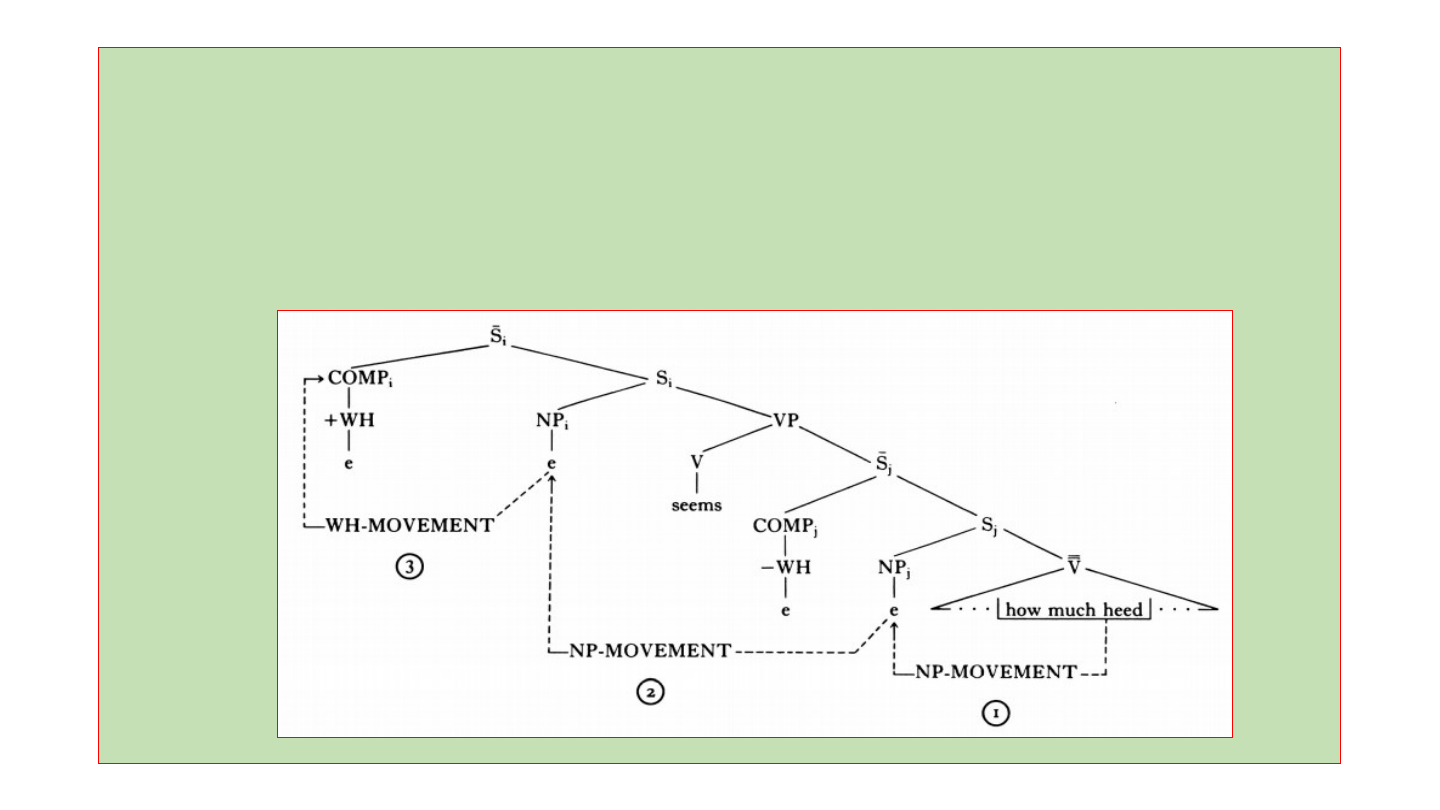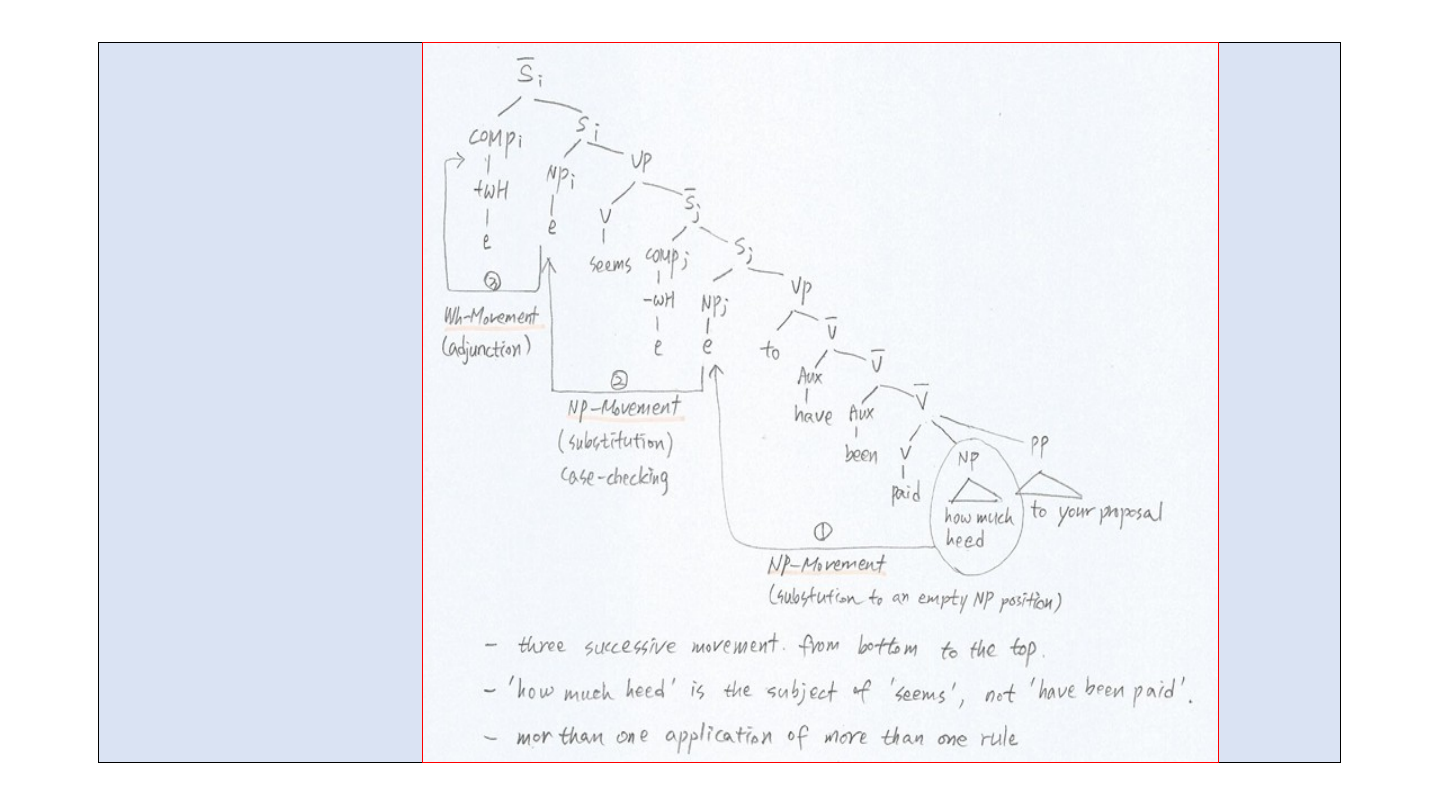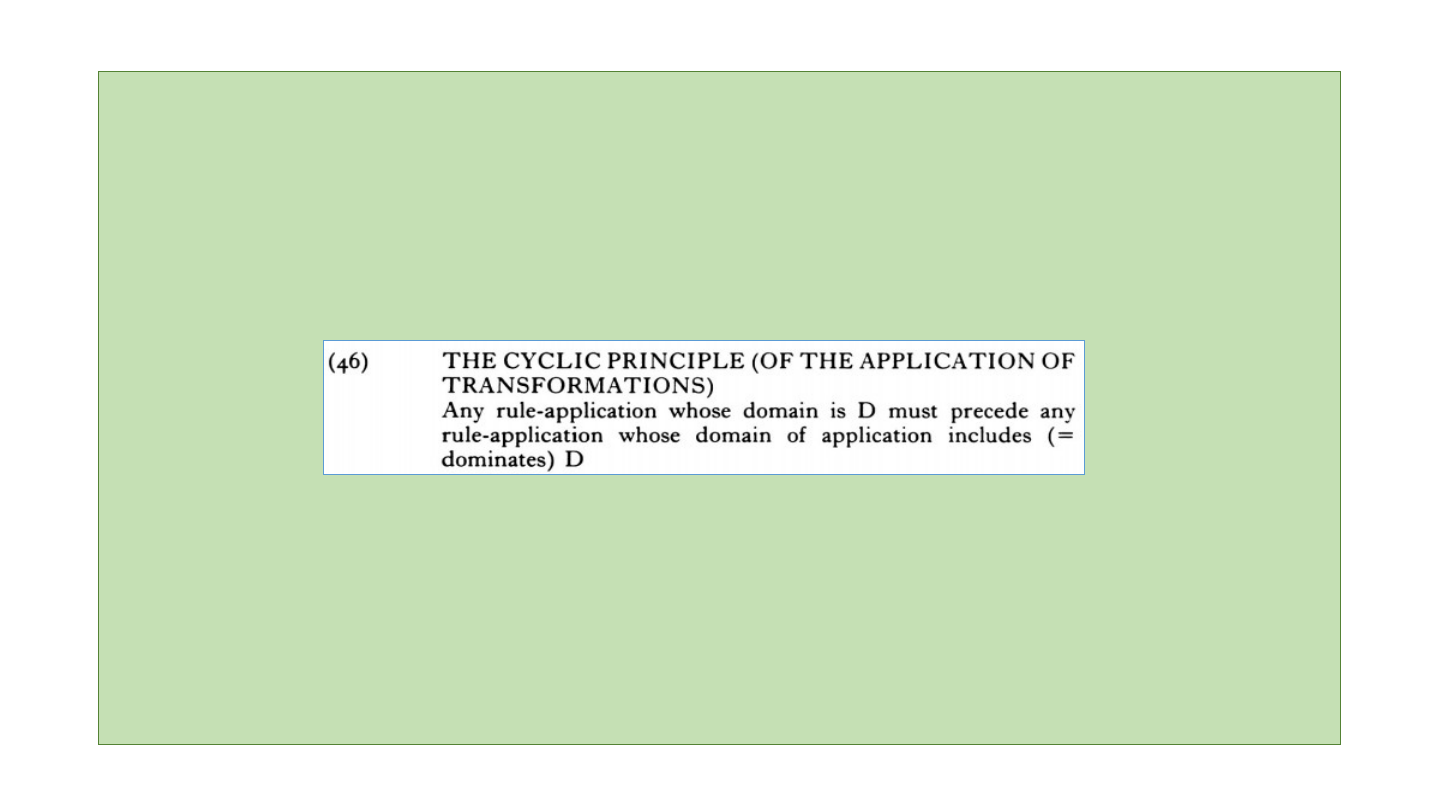
9. How do the movement rules apply simultaneously or sequentially?
[1] What happens in the derivation of sentences which involve the application of more
than one rule, or indeed more than one application of the same rule? [2] And how do the
rules apply simultaneously or sequentially? Crucial to any attempt to answer such a
question is the notion of the domain of application of a rule:
In the definition (40), the minimal category means ‘lowest in the tree-structure’.
The domain of application of a rule in the interpretation of transformations can be
illustrated by (41)-(43).
(41) How much heed seems to have been paid to your proposal?

Since ‘heed’ is restricted to occurring underlying in the expression pay (so much)
heed,
the idiom chunk argument tells us that the underlying structure of (41) will be (42):
In order to derive the surface structure associated with (41) from the underlying
structure (42), the NP ‘how much heed’ will have to undergo three successive
(=sequential) movement operation.

Fristly, the NP will have to be substituted for the empty node under NPj by NP-Move-
ment.
Secondly, it will subsequently be substituted for the empty node under NPi, again by
NP-Movement.
Finally, it will be adjoined to the left of COMPi by WH-Movement.
These three successive movement of the NP ‘how much heed’ can be represented in
(43).
(43)

The structure (43)
can be schematically
represented in detail
again as this:
(1) NP-Movement for
passive structure
(2) NP-Movement for
case-marking
(3) WH-Movement for
question

In conclusion, rules apply in Phrase-markers ‘from bottom to top’, i.e. starting at the
bottom of the tree, and working upwards. In other words, rules apply to subordinate
constituents(‘lower’ in the tree) before they apply to superordinate(‘higher’)
constituents.
This ‘bottom-to-top’ principle, we might state rather more formally as (46).
Any transformation which obeys principle (46) is called a cyclic transformation.
(46) states that ‘smaller’ (‘lower’ or subordinate) constituents undergo rules before ‘larger’
(‘higher’ or superordinate) constituents.
♣ Answers the two questions:
[1] More than one application of more than one rule is possible.
[2] Rules apply sequentially.